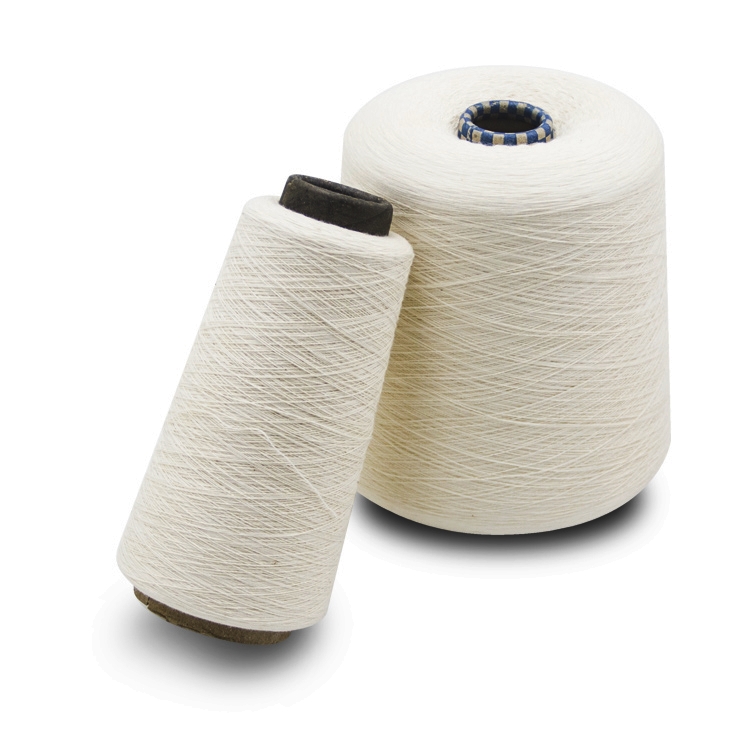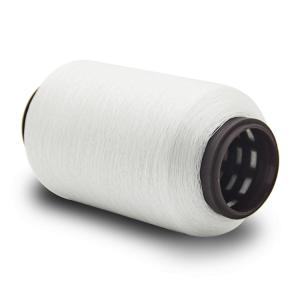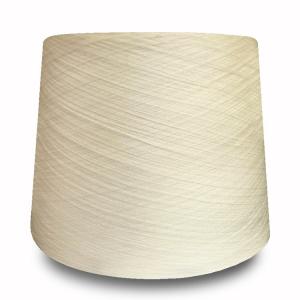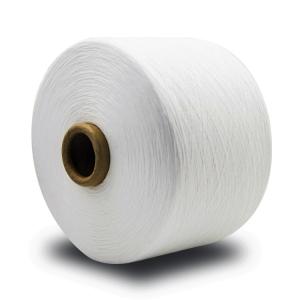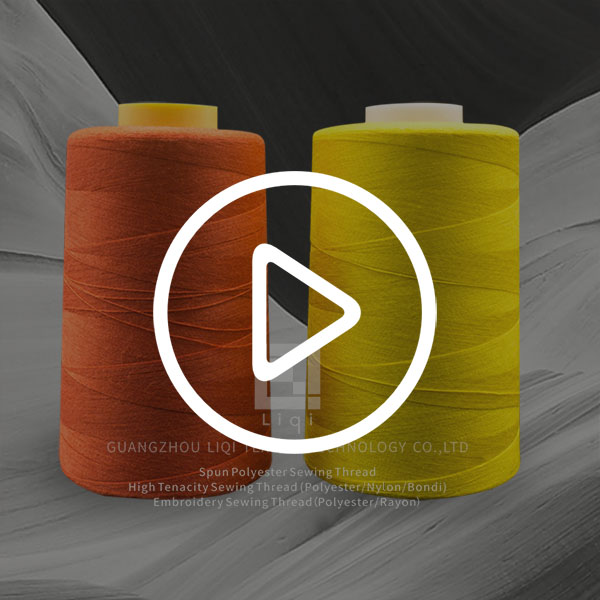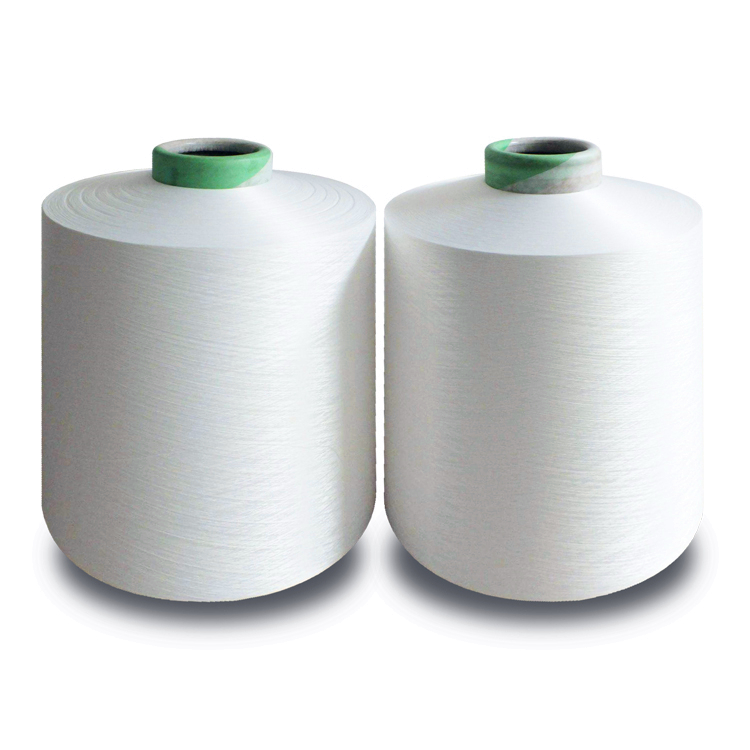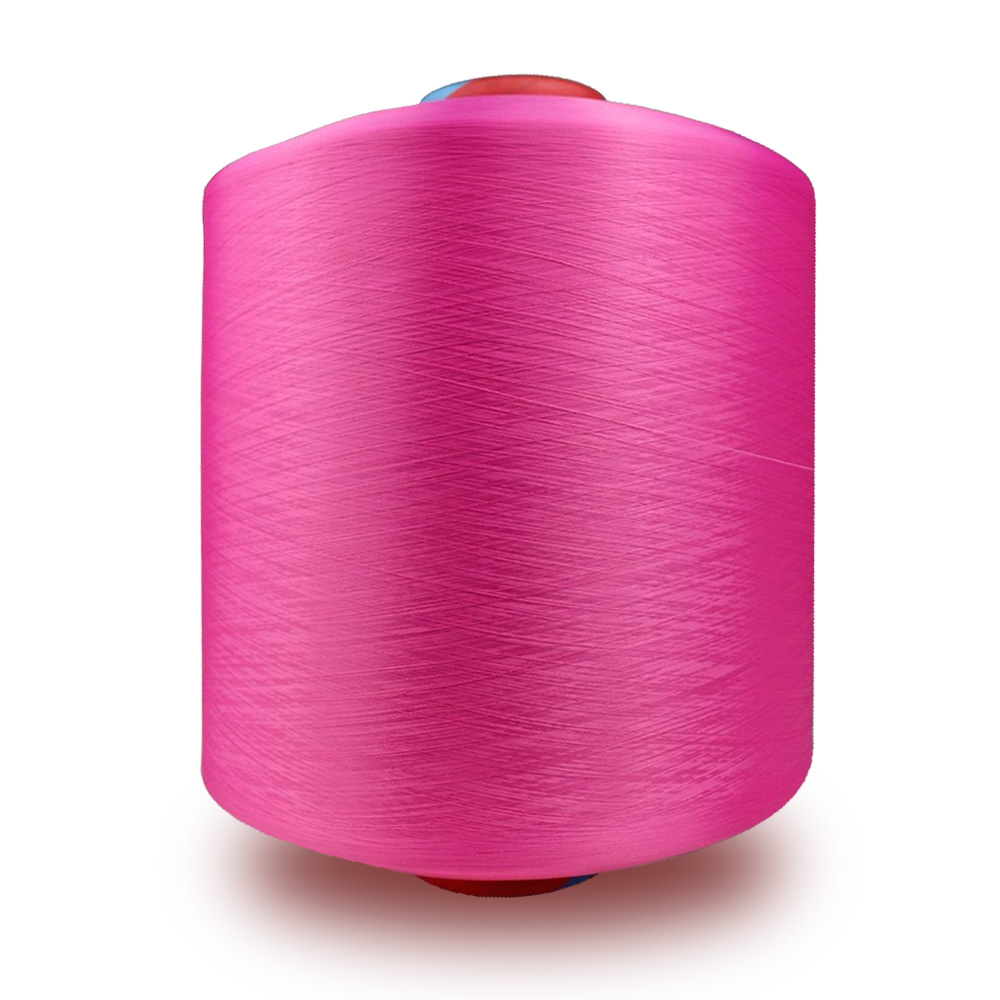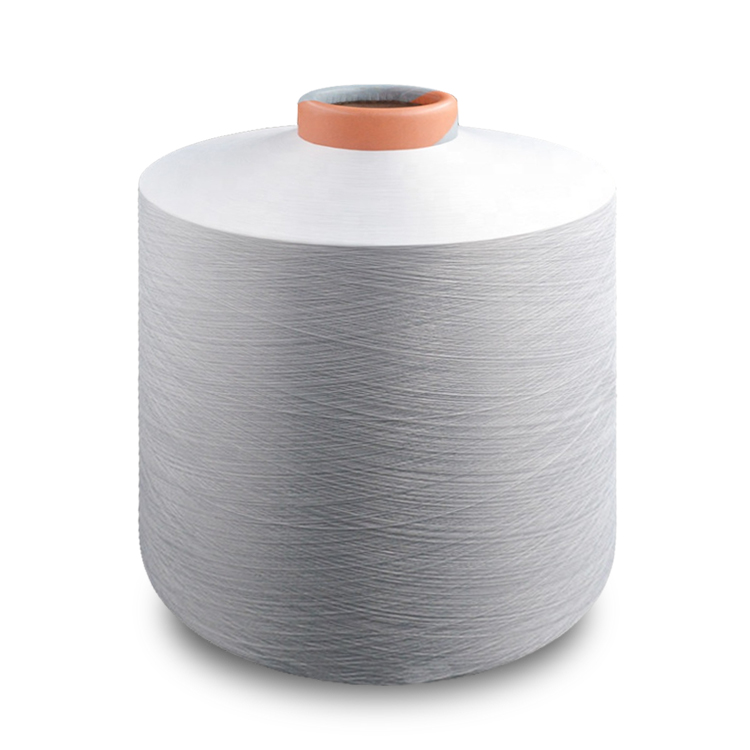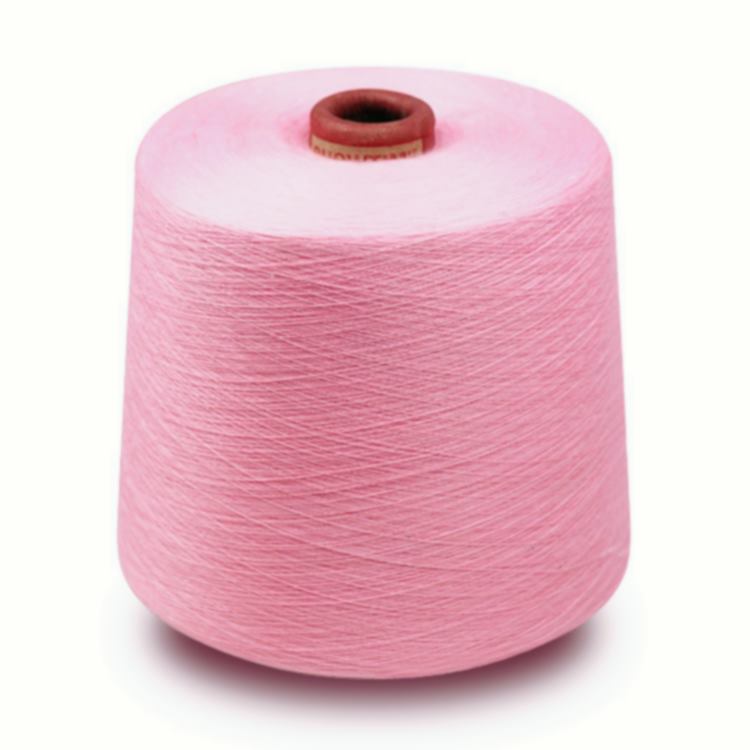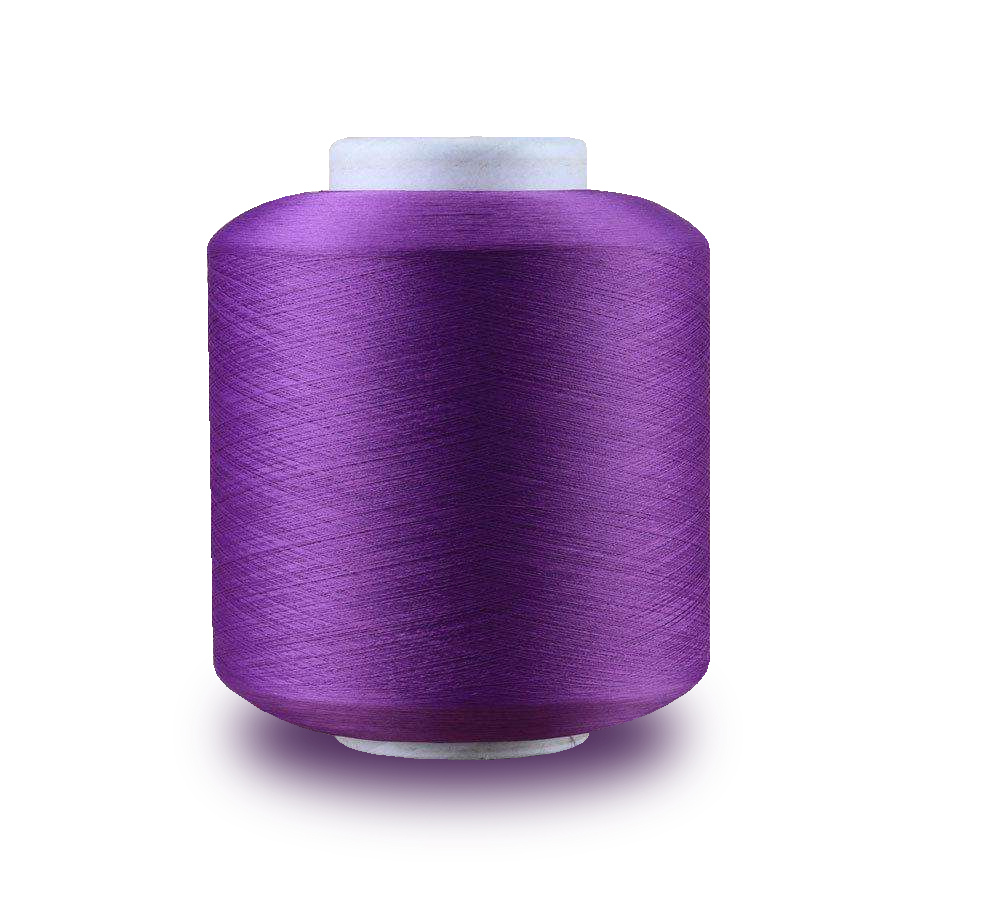Share to:
Related Products
Hot selling NE30/1 natural raw white yarn for knitting
LQ-0506
Price: From $0.36
Delivery time: 9-20 days after payment
MOQ: 500 KG
There are two kinds of knitting: warp knitting and weft knitting. Cotton yarn is mainly used in weft knitting machine. Weft knitting is a kind of weft knitted fabric. The yarn is sent to the knitting area of the knitting machine with a certain tension wheel, and then it is bent into loops and connected with each other to form a knitted fabric.
From the weaving point of view, the yarn should be soft and smooth, with proper and even twist, certain strength and elongation at break, even strip dry and few details. Because knitted fabric is relatively loose, there are many gaps between yarn and yarn, the uneven yarn directly affects the appearance of the fabric, and the details are more harmful. Fewer flying flowers.
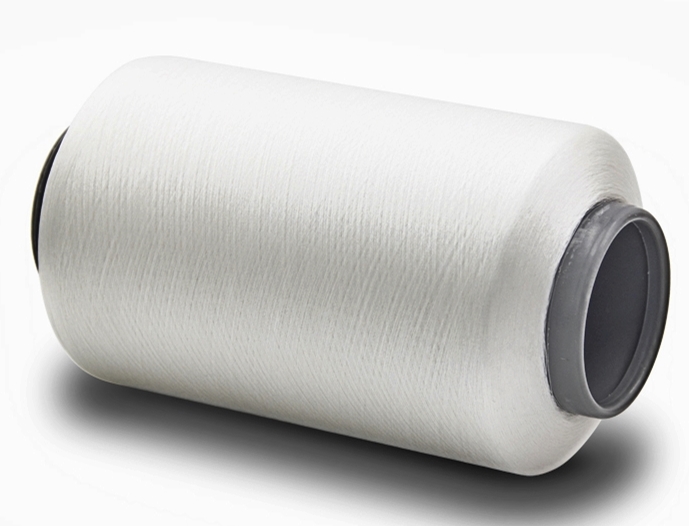
The main problems of knitting yarn
The quality and performance of knitted fabrics depend on the properties of knitting materials, the structure and specification of knitted fabrics, dyeing and finishing. Among them, the performance of knitting materials is the main factor affecting the properties of knitted fabrics. Different materials are used for different purposes. At present, most knitted fabrics for underwear use cotton yarn; the raw materials of socks products include cotton yarn, wool and chemical fiber; the woolen sweater mainly uses wool, acrylic fiber, acrylic fiber blended yarn, etc.; the main raw materials of knitted outerwear are polyester, nylon, acrylic fiber, blended yarn and new textile materials (such as Tencel fiber, differential fiber, etc.); the raw materials for special industries are mainly glass fiber, metal fiber, Aramid fiber, etc. The components of raw materials can be pure spinning with only one fiber or blended yarn with more than two fibers (such as fancy yarn, slub yarn, knot yarn, core spun yarn, etc.). In addition, the appearance of new raw materials, such as chemical fiber shaped fiber, composite fiber, especially super fine denier fiber, has opened up a new way for knitting yarn.
In the laboratory, the yarn count can basically reach the first-class level, only the NEP impurity of the ordinary combed yarn exceeds, and the twist coefficient of very few yarn exceeds 360. The other is that the sliver is unevenly dry, which can't be reflected by the sliver of blackboard. The blackboard of 0.9.1.0 will have more cloud spots and shadows on the physical object, no matter it's combed or combed, or even the plush cotton yarn. Third, there are different fibers, common combs and combs. Different fiber yarn can only be covered by dyed products. Fourth, the white spots and uneven coloring of neps are prominent on the combed yarn, and the color of the blended yarn fabric is uneven. Five is hairiness, cotton yarn hairiness, weaving flower clothing more, flower clothing rolling in is weaving defects, bad needle, light finished fabric, fabric surface wool, not smooth.
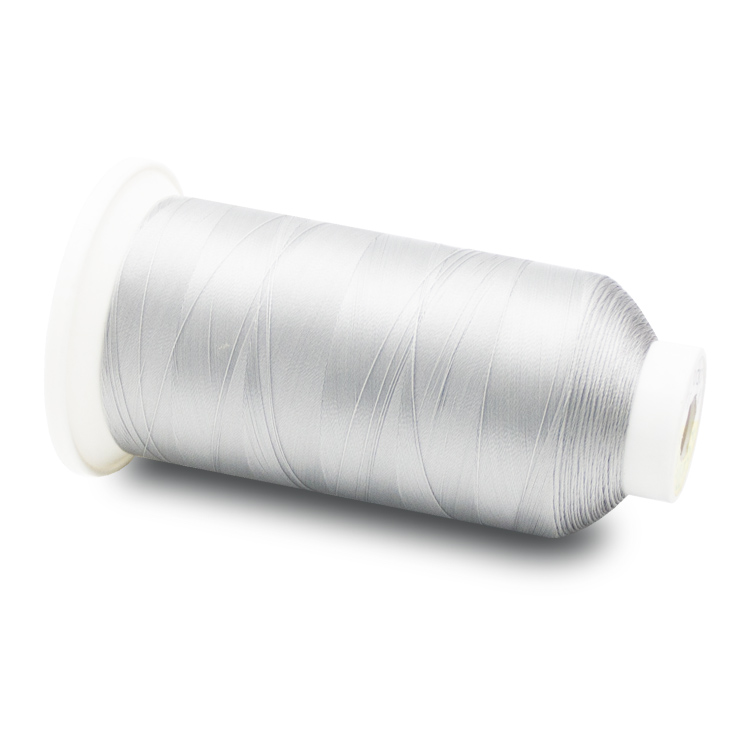
Quality requirements of yarn count for knitting enterprises
When more than 100 yarns are fed into the circular knitting machine for weft knitting, if there is a slight deviation, it will be exposed on the surface of the knitted fabric, especially the single-sided knitted fabric, rib fabric and double rib fabric, because of the different organizational structure, the reflection is not obvious. Physical testing of first-class products is the basic condition, mainly for weaving services. Not only the blank cloth should meet the requirements, but also the quality of the blank cloth after dyeing and finishing is no problem. Single strength and twist coefficient can meet the requirements. (1) the twist coefficient should not exceed 340; 2) the sliver should be dry evenly; 3) there should be no different fibers as much as possible; (4) the number of NEP impurity particles should be small, there should be no white spots with low coloring rate, and the dyeing uniformity should be good, and it is better to reach grade 4-5; (5) the hairiness is small, which can reduce flying flowers during weaving, and improve the finish of finished fabric.
In the process of forming knitted fabric on knitting machine, yarn is subject to complex mechanical effects, such as stretching, bending, twisting, friction, etc. In order to ensure the normal production and product quality, knitting yarn shall meet the following requirements:
1. The yarn shall have certain strength and extensibility.
Yarn strength is an important quality index of knitting yarn. Because the yarn undergoes certain tension and repeated load in the process of preparation and weaving, the knitting yarn must have certain strength. In addition, in the process of knitting into a circle, the yarn is also subject to bending and torsion deformation, so it is also required that the knitting yarn has certain extensibility, so as to facilitate the knitting into a circle and reduce yarn breakage.
2. The yarn should have good softness
The softness of knitted yarn is higher than that of woven yarn. Because the soft yarn is easy to bend and twist, the loop structure in the knitted fabric is uniform, the appearance is clear and beautiful, and the broken ends of the yarn and the damage to the looped parts in the weaving process are also reduced.
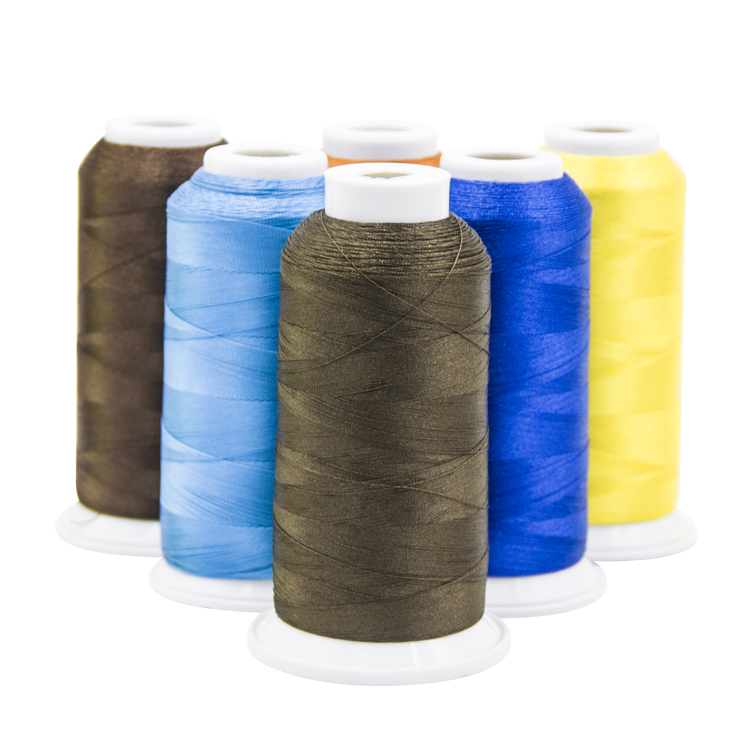
3. The thread should have a certain twist
Generally speaking, the twist of knitting yarn is lower than that of weaving yarn. If the twist is too large, the softness of the yarn will be poor. When weaving, it is not easy to be bent and twisted, and it is also easy to produce kinks, which will cause fabric defects and damage the knitting needles. In addition, the yarn with too large twist will affect the elasticity of the knitted fabric and skew the coils. However, the twist of knitting yarn should not be too low, otherwise it will affect its strength, increase the broken ends during weaving, and the yarn will be bulky, which will make the fabric easy to pilling, and reduce the wearing performance of the knitted fabric. Therefore, the right choice of twist is an important way to choose yarn reasonably. The twist requirements of knitted fabrics vary with different purposes.
It is required to be smooth, compact, smooth on the surface and clear in the grain. The twist of the yarn should be larger, which can be close to the warp standard for weaving with the same density. The twist of the outer yarn should be larger to enhance the straightness and improve the pilling. Cotton wool cloth and elastic cloth should be soft and elastic, and the twist of yarn should be slightly lower. Generally, the lower twist deviation of weft yarn for weaving with the same yarn density is used. Yarn used for pile knitted fabric, in order to facilitate the pulling down, and make the pile thickness uniform, twist requirements smaller.
In addition, the twist varies with the yarn density.
4. The linear density of the yarn shall be uniform and the yarn defects shall be few.
Evenness of yarn linear density, that is, evenness of yarn line drying, is an important quality index of knitting yarn. The yarn with even evenness is good for knitting and ensuring the quality of fabric, making the coil structure even and the fabric surface clear. If there are rough knots on the yarn, the weaving will not pass smoothly, resulting in yarn breakage or damage to the machine parts, and it is easy to form "stripes" and "cloud spots" on the cloth surface, reducing the quality of the knitted fabric; if there are details on the yarn, the strength is insufficient here, and it is easy to break the ends, affecting the quality of the fabric and reducing the productivity of the machine. Because the knitting machine has a multi-channel loop forming system, so it is not only required that the thickness of each route of yarn is uniform, but also the thickness difference between each route of yarn should be strictly controlled, otherwise the defects such as horizontal stripes and shadows will be formed on the fabric surface, reducing the fabric quality.
5. The yarn should have good moisture absorption
The ability of yarn to absorb moisture in the air is called hygroscopicity. The moisture absorption capacity of various fibers is very different, and the amount of moisture absorption varies with the temperature and humidity of air. The yarn used in knitting production should have certain moisture absorption. Under the same relative humidity, the yarn with good hygroscopicity has not only good electrical conductivity, but also good stability of yarn twist and extension, so that the yarn has good weaving performance.
6. The yarn should have good finish and small friction coefficient.
Knitting yarn should be free of impurities and oil stains as far as possible, and should be very smooth. The unsmooth yarn is easy to damage the machine parts due to its severe friction, and there are many flying flowers in the workshop, which not only affects the health of the workers, but also affects the productivity of the knitting machine and the quality of the fabric.
In addition, in the process of knitting, the yarn must be in contact with a variety of machine parts to make relative sliding, so that the yarn is subject to certain resistance, resulting in yarn tension. Therefore, the yarn with rough surface or the yarn with excessive friction coefficient will produce higher yarn tension when passing through the loop forming parts, which will affect the evenness of yarn tension and cause the unevenness of coil structure. In order to reduce the friction coefficient of yarn, antistatic agent, lubricant or wax treatment can be used on the surface of yarn.


